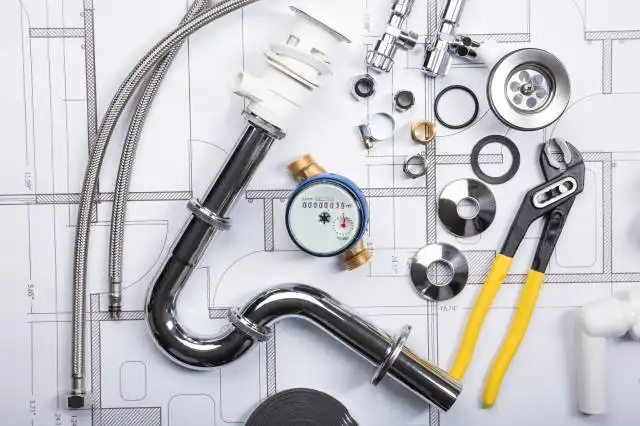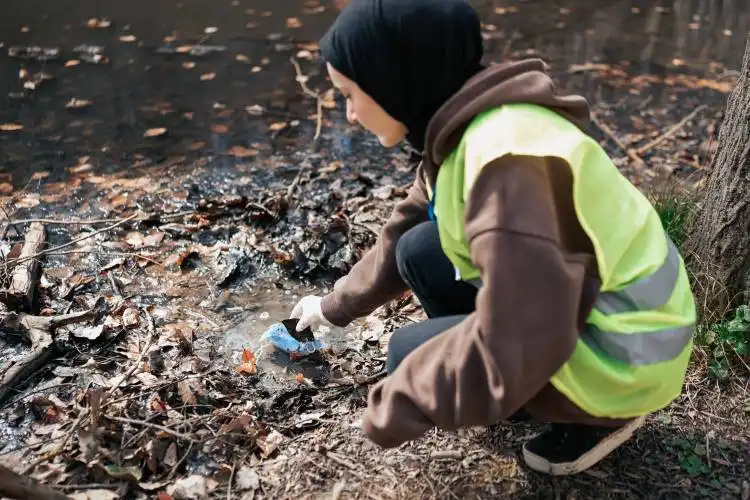Start a Commercial Cleaning Business
Harnessing Your Inner Dynamo: The Bright Future of Commercial Cleaning Entrepreneurship
| Updated


COMMERCIAL CLEANING BUSINESS
Unleash the cleaning dynamo within and dive into a commercial cleaning business! It's not all suds, gloves, and brooms - it's a business teeming with the potential for recurring clients and steady income. A commercial cleaning business involves providing professional cleaning services to businesses such as offices, shops, restaurants and even factories. Your diligent service, pristine finish, and attention to detail could unclog your path to sparkling entrepreneurial success!
Jump to Business Plan
RELATED BUSINESS IDEAS
Browse ALL Cleaning & Maintenance Services Business Ideas
Discover Your Perfect Domain
Unlock the door to your online success with our hand-picked selection of premium domain names. Whether you're starting a new venture or rebranding an existing one, the right domain can set the tone for your digital presence. Browse through our curated list, each with its unique potential to enhance your brand's visibility and credibility.
COMMERCIAL CLEANING MINI BUSINESS PLAN
This a quick reality check to help you identify the strengths and weaknesses of your business concept before you dive in.
Business Idea: Commercial Cleaning Business
Expected Percent Margin:
- Gross Margin: 35-50%
- Net Profit Margin: 10-15%
Earnings Expectations:
- Daily Earnings: $100 - $300
- Weekly Earnings: $500 - $1,500
- Monthly Earnings: $2,000 - $6,000
- Annual Earnings: $24,000 - $72,000
Actions to Hit Those Numbers:
Human Resources:
- Initial Staff: Employ at least 2-5 cleaners depending on client needs and business scale.
- Training: Invest in proper training in commercial cleaning techniques and standards.
Marketing and Customer Acquisition:
- Networking: Reach out to local businesses and offer service trials to build relationships.
- Website and Social Media: Maintain updated digital platforms showing services, testimonials, and business information.
Service Quality:
- Equipment: Invest in professional-grade cleaning tools and resources.
- Consistency: Establish high-quality standards & consistency of service.
Cost Control:
- Cleaning Supplies: Secure a cost-effective, reliable source for cleaning supplies, aim to keep it under 5% of total costs.
- Transport: Establish efficient route planning to reduce fuel and maintenance costs.
Business Operations:
- Contracts: Secure long-term cleaning contracts with local businesses for a steady income.
- Insurance: Procure necessary business insurance to protect from liability.
Please remember, these figures are estimates and actual numbers may vary based on a number of factors including market size, competition, and the ability to secure business contracts.
NOT WHAT YOU HAD IN MIND? Here are more ideas



Browse ALL Cleaning & Maintenance Services Business Ideas
Grab Your Business Website Name
Before you get caught up in the whirlwind of setting up your business, invest in a domain name. It's a small but significant step that lays the foundation for your brand and makes it easier for customers to find and trust you. Just like you wouldn't build a house without securing the land first, don't build a business without securing your domain name.
"Why? Can't that wait?" Here's why it shouldn't
Step 1: Determine if the Business is the Right Endeavor
Breakdown of Startup Expenses
Before starting a commercial cleaning business, it is important to understand the startup costs associated with the venture. These costs may include the cost of supplies, equipment, and any necessary licenses or permits. Additionally, it is important to consider the cost of any marketing materials and advertising, as well as the cost of any necessary insurance. It is also important to consider the cost of any necessary training or certifications, as well as the cost of any necessary software or technology.
Breakdown of Ongoing Expenses
Once the business is up and running, it is important to consider the ongoing expenses associated with the business. These expenses may include the cost of supplies, equipment, and any necessary licenses or permits. Additionally, it is important to consider the cost of any marketing materials and advertising, as well as the cost of any necessary insurance. It is also important to consider the cost of any necessary training or certifications, as well as the cost of any necessary software or technology. Additionally, it is important to consider the cost of any necessary staff, such as cleaners, and the cost of any necessary office space.
Examples of Ways to Make Money
There are many ways to make money in a commercial cleaning business. One way is to offer services such as window cleaning, carpet cleaning, and upholstery cleaning. Additionally, many commercial cleaning businesses offer janitorial services, such as trash removal, floor cleaning, and restroom cleaning. Additionally, many businesses offer specialty services, such as pressure washing, tile and grout cleaning, and hard surface cleaning. Finally, many businesses offer additional services, such as landscaping and snow removal.
Step 2: Name the Business
Choosing a name for your business is an important step in the process of starting a commercial cleaning business. It should be something that reflects the services you offer and is easy to remember. It should also be unique and not already in use by another business. Consider using words that describe the services you offer, such as “clean”, “shine”, or “sparkle”. You may also want to include your name or the city or area you serve in the business name. Additionally, make sure to check with the local government to make sure the name you choose is not already in use and is available for you to use.
Register the Business Name
Once you have chosen a name for your business, you will need to register it with the local government. This is usually done through the Secretary of State's office or the local county clerk. You will need to provide information about the business, such as the name, address, and type of business. You may also need to provide proof of ownership or a business license. Once the name is registered, you will be able to use it for all of your business activities. Additionally, registering the business name will help protect it from being used by another business.
Create a Logo
Creating a logo for your business is a great way to make it stand out from the competition. A logo can be used on business cards, websites, and other marketing materials. It should be simple, memorable, and reflect the services you offer. Consider hiring a professional designer to create a logo that is unique and eye-catching. You may also want to consider using a logo-making software to create a logo yourself.
Develop a Tagline
A tagline is a short phrase or sentence that describes your business. It should be memorable and reflect the services you offer. Consider using words that describe the services you offer, such as “clean”, “shine”, or “sparkle”. Additionally, make sure the tagline is easy to remember and conveys a message about your business. A tagline can be used on business cards, websites, and other marketing materials.
Step 3: Obtain Necessary Licenses and Permits
Before starting a commercial cleaning business, it is important to research the local requirements for obtaining the necessary licenses and permits. Depending on the state, city, and county, there may be different requirements for obtaining a business license. It is important to check with the local government to ensure that all necessary licenses and permits are obtained before starting the business. Additionally, it is important to check with the local health department to ensure that any necessary permits are obtained as well.
Obtain Necessary Insurance
The next step in obtaining the necessary licenses and permits is to obtain the necessary insurance. Depending on the state, business owners may need to obtain general liability insurance, workers’ compensation insurance, and/or other types of insurance. It is important to research the specific requirements for the state and to obtain the necessary insurance before starting the business. Additionally, it is important to check with the local government to ensure that the insurance meets the necessary requirements.
Register with the State
The final step in obtaining the necessary licenses and permits is to register the business with the state. Depending on the state, this may involve registering the business with the Secretary of State or with the Department of Revenue. Additionally, it is important to check with the local government to ensure that all necessary paperwork is completed and filed properly. Once the business is registered with the state, the business is ready to begin operations.
Step 4: Create a Business Plan
Creating a business plan is an important step in starting a commercial cleaning business. The plan should outline the goals and objectives of the business. It should include the services you plan to offer, the target market, and the pricing structure. It should also include a timeline for when you plan to reach certain milestones. Additionally, it should include a budget for startup costs and ongoing expenses.
Research the Market
Before creating a business plan, it is important to research the market. This includes researching the competition and the local market. It is important to know what services the competition is offering, what their pricing structure is, and what their target market is. Additionally, it is important to know the local market and what services are in demand. This will help you determine what services to offer and how to price them.
Develop a Marketing Plan
Once you have researched the market, you can develop a marketing plan. This plan should include the methods you plan to use to market your services. It should also include a timeline for when you plan to implement each marketing strategy. Additionally, it should include a budget for marketing expenses.
Outline Financial Goals
The business plan should also include financial goals. This includes outlining the amount of money you plan to make in the first year, the amount of money you plan to make in the next five years, and the amount of money you plan to make in the long-term. Additionally, it should include a budget for startup costs and ongoing expenses. This will help you stay on track and ensure that you are meeting your financial goals.
Step 5: Secure Financing
Securing financing is an important step in starting a commercial cleaning business. There are several ways to finance a business, including taking out a loan, using personal savings, or seeking out investors.
Taking out a loan is a common way to finance a business. It is important to research different loan options and compare interest rates, repayment terms, and other factors. Additionally, it is important to consider the impact of taking out a loan on personal credit.
Using personal savings is another option for financing a business. This can be a good option for those who have the resources to do so. It is important to consider the impact of using personal savings on personal finances and the potential risks of investing in a business.
Seeking out investors is another option for financing a business. This can be a good option for those who need more capital than what they can provide themselves. It is important to research potential investors and consider the terms of any potential investments. Additionally, it is important to consider the impact of having investors on the business.
Tips for Securing Financing
When securing financing for a commercial cleaning business, it is important to consider all of the options available. Additionally, it is important to research potential lenders and investors and compare the terms of any potential investments. It is also important to consider the impact of taking out a loan or using personal savings on personal finances. Finally, it is important to consider the impact of having investors on the business.
Step 6: Purchase Necessary Equipment
When purchasing equipment for a commercial cleaning business, it is important to consider the type of services that will be offered. For example, if the business will be providing carpet cleaning services, then a carpet cleaning machine will be necessary. Additionally, the business will need to purchase cleaning supplies such as mops, brooms, vacuums, and cleaning solutions. It is important to research the various types of equipment available and determine which ones will be the most cost-effective and efficient for the business.
Research Vendors
Once the necessary equipment has been identified, it is important to research vendors to find the best deals. It is important to compare prices and features of the different equipment to ensure that the business is getting the best value for its money. Additionally, it is important to research the reliability and customer service of the vendors to ensure that the business is getting the best service possible.
Financing Options
In addition to researching vendors, it is important to consider financing options for the equipment. Many vendors offer financing options that allow businesses to purchase the equipment without having to pay the full cost upfront. This can be beneficial for businesses that may not have the necessary funds to purchase the equipment outright.
Maintenance
Finally, it is important to consider the maintenance of the equipment. This includes regular cleaning and maintenance of the equipment to ensure that it is functioning properly. Additionally, it is important to research the warranty options for the equipment to ensure that the business is covered in the event of any malfunctions or repairs.
Step 7: Market the Business
Once the business is up and running, it is important to spread the word about the services offered. Examples of marketing strategies include:
- Creating a website that showcases the services offered and the areas serviced.
- Utilizing social media platforms to reach potential customers.
- Investing in local advertising such as radio, television, and newspaper ads.
- Developing relationships with local businesses and organizations that may need the services offered.
- Networking with other local businesses to gain referrals.
- Creating promotional materials such as flyers, brochures, and business cards.
- Participating in local events and trade shows.
Tips for Effective Marketing
In order to effectively market the business, it is important to focus on the target market and create a marketing plan that is tailored to that market. Other tips for effective marketing include:
- Researching the competition and understanding what they offer.
- Creating a unique selling proposition to differentiate the business from the competition.
- Developing a clear and consistent message that resonates with the target market.
- Utilizing a variety of marketing channels to reach potential customers.
- Tracking the results of marketing efforts to determine what is working and what needs to be improved.
- Offering incentives and discounts to attract new customers.
- Following up with customers to ensure satisfaction and encourage repeat business.
Step 8: Hire Employees
When it comes to hiring employees for your commercial cleaning business, there are several considerations to take into account. First, you’ll need to decide whether you want to hire full-time or part-time employees. Full-time employees will require more of an investment, but they can provide more consistent services. Part-time employees may be more cost-effective, but you’ll need to ensure that they are available when you need them.
Second, you’ll need to decide what type of employees you want to hire. Do you want to hire experienced cleaners or are you willing to train new employees? Experienced cleaners may be more expensive, but they can provide a higher quality of service. New employees may be less expensive, but they may require more training and supervision.
Third, you’ll need to decide how you will compensate your employees. Will you pay them an hourly wage or will you offer a commission-based pay structure? An hourly wage may be more predictable, but a commission-based structure may incentivize employees to work harder.
Finally, you’ll need to decide what benefits you will offer your employees. Will you offer health insurance, vacation days, or other benefits? Offering benefits can help you attract and retain quality employees.
Advertising for Employees
Once you’ve decided on the type of employees you want to hire, you’ll need to advertise for them. You can advertise on job boards, in newspapers, and on social media. You can also reach out to local schools and universities to let them know you’re hiring.
When advertising for employees, make sure to include a detailed job description and a list of the qualifications you’re looking for. You should also include information about the salary and benefits you’re offering. This will help you attract qualified candidates.
You should also consider offering incentives for referrals. Ask your current employees to refer their friends and family for the job. This can help you find qualified candidates quickly.
Finally, you should consider offering a signing bonus for new employees. This can help you attract the best candidates and ensure that they stay with your business for the long-term.
Interviewing and Hiring
Once you’ve received applications, you’ll need to start the interviewing process. Make sure to ask each candidate the same set of questions to ensure fairness. Ask questions about their experience, their availability, and their interest in the job.
You should also consider conducting background checks on potential employees. This can help you ensure that you’re hiring trustworthy and reliable employees.
Once you’ve found the right candidate, you’ll need to create an employment contract. This should include the job title, the salary, and the benefits you’re offering. It should also include any rules and regulations that the employee must abide by.
Finally, you should consider offering training to new employees. This will help them become familiar with your business and the services you offer. It will also help them understand the expectations you have for them.
Step 9: Maintain Records
Keeping accurate records is essential for any business. It allows you to track your income and expenses, and it also helps you to stay organized and on top of your finances. Additionally, it is important to maintain accurate records for tax purposes and to ensure compliance with any applicable laws or regulations.
Types of Records to Keep
When it comes to record keeping for a commercial cleaning business, there are several types of records that should be kept. These include financial records such as income and expenses, customer records, employee records, and any other records related to the business. Additionally, it is important to keep records of any contracts or agreements that have been made with customers or vendors.
How to Maintain Records
There are several ways to maintain records for a commercial cleaning business. One of the most popular methods is to use a spreadsheet or accounting software to track income and expenses. This allows you to easily organize and track your finances. Additionally, it is important to keep all customer and employee records in a secure and organized manner.
Record Keeping Tips
When it comes to record keeping for a commercial cleaning business, it is important to be organized and consistent. Make sure to keep all records up to date and accurate, and be sure to back up any digital records in case of a system failure. Additionally, it is important to keep all records in a secure and easily accessible location. Finally, make sure to review all records regularly to ensure accuracy and compliance with any applicable laws or regulations.
EXPLORE MORE CATEGORIES
Browse ALL Business Idea Categories
TAKE THE NEXT STEPS









